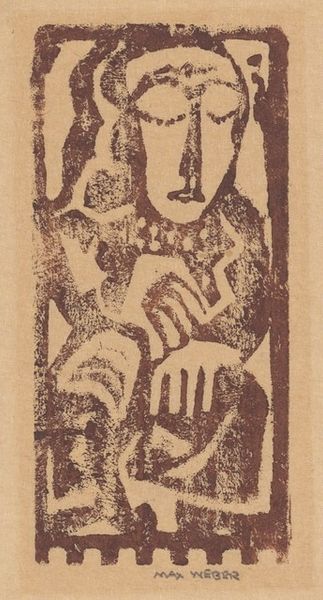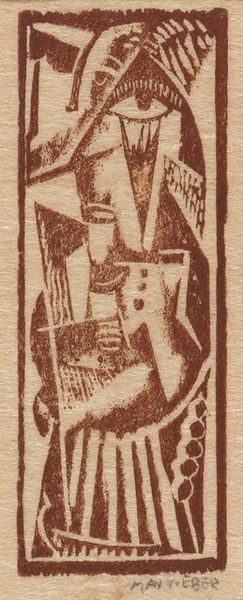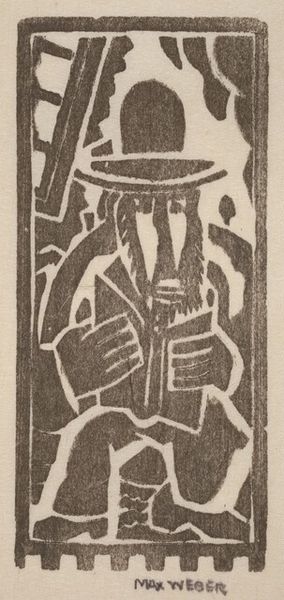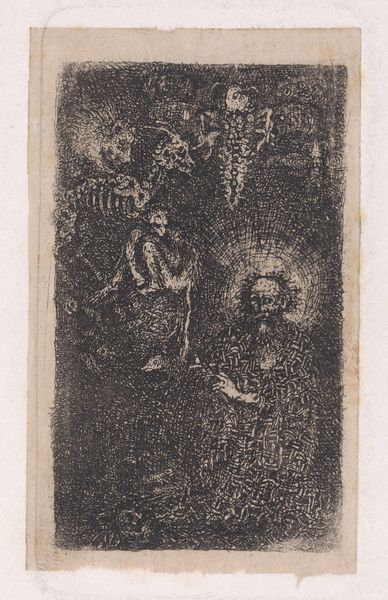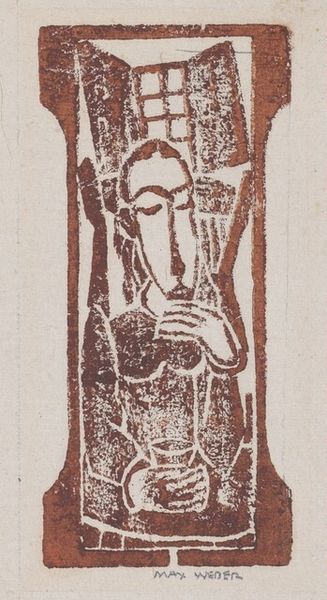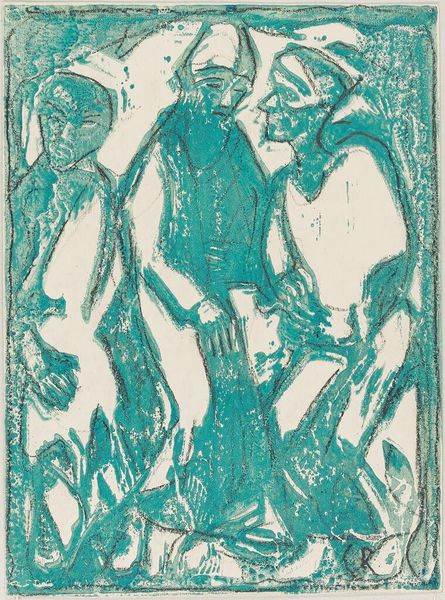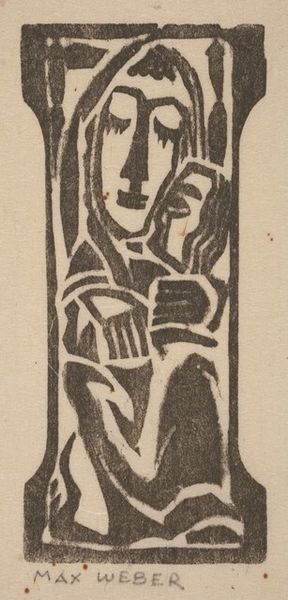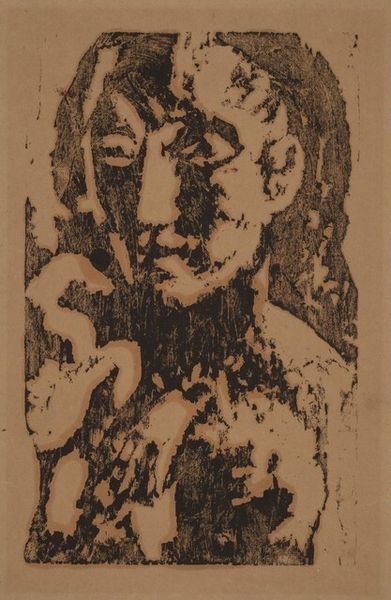
Dimensions: image: 12.38 × 5.4 cm (4 7/8 × 2 1/8 in.) sheet (folded): 18.1 × 9.37 cm (7 1/8 × 3 11/16 in.)
Copyright: National Gallery of Art: CC0 1.0
Curator: Before us we have “Mother Love,” a woodcut print, likely created sometime between 1920 and 1950, by the artist Max Weber. Editor: The piece exudes tenderness despite the raw, almost urgent marks of the woodcut. It's immediately evocative of a primal bond. Curator: Observe how Weber uses the woodcut medium itself. The coarseness of the lines doesn't detract but adds to the emotional weight, focusing on the essential form—the mother cradling her child. Note also how the composition directs our eyes. The limited palette, a singular, earthy tone, allows the interlocking shapes to really resonate, generating a rhythmic interplay of light and shadow. Editor: Indeed. The curves embracing the child, countered by the sharper lines defining their features, symbolize not just affection, but also the struggles inherent in parenthood. And isn’t the symbolic resonance heightened by the medium? The image is not perfectly smooth—there are inherent difficulties present in transferring it to the block. It suggests a history of effort and the marks it makes are inseparable from the image. Curator: It underscores the emotional Expressionism he channels so expertly. Look at the way the hands are depicted—strong and capable, yet gently encircling the child. We are prompted to analyze the relationship between interiority and outward expression. The woodcut demands the artist distill his vision to the very basic elements of form and surface texture. Editor: I also see, culturally speaking, a clear Madonna and Child theme, echoing artistic traditions for centuries. It elevates a common, daily scene—nurturing—to the realm of archetypal experience, drawing on layers of cultural memory related to motherhood and creation. This piece really epitomizes Weber’s tendency to invoke emotion in his artwork via universal symbolism. Curator: In sum, Weber uses Expressionist techniques, distilling imagery into raw, striking forms to express deep sentiments and emotions, particularly highlighting form and visual intensity. Editor: For me, the power lies in its embrace of a timeless subject with the immediacy of rough, expressive marks—it suggests that this bond between mother and child is enduring and has always been with us.
Comments
No comments
Be the first to comment and join the conversation on the ultimate creative platform.
